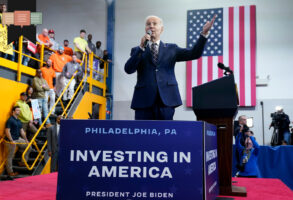
Published February 23, 2015
We Americans have always prided ourselves on the extraordinary degree of mobility this country has long made possible for its citizens—the idea that, with hard work and a little luck, an immigrant or a child of poor parents can start out with nothing and end up successful and rich. We still believe this about ourselves: International comparisons of public opinion find that Americans express far greater confidence than citizens of other developed nations that hard work is rewarded and that everyone has a real chance to rise out of poverty. But in fact, by many measures, the United States actually does not stand out among advanced economies in terms of economic mobility, and it has not for decades.
Many of us surely sense this even if we do not know all the facts and figures. There is a divergence between what many Americans want to believe about their country and what they know to be true about the way they and their friends and family live now. Americans at the bottom of the income scale do not have enough opportunities to move up, Americans in the middle feel stuck, younger Americans are having trouble getting started, and Americans in general seem less inclined to follow after opportunities. These various challenges are all distinct, but they stem from the same core problem: immobility.
The degradation of this central aspect of the so-called American dream is finally beginning to take shape as a potent political issue. The headline of a front-page story in the Washington Post in January put its finger on an increasingly evident shift in our economic debates: “Both parties agree: Economic mobility will be a defining theme of 2016 campaign.”
That the two parties would agree even on the subject of our economic arguments is quite a change from recent years, when they have mostly been talking past each other. And more remarkable still is that they seem to have turned to the right subject, too. Serious attention to the state of economic mobility could help us overcome the peculiar mix of acrimony and nostalgia that has enveloped our politics since this century began and could help us see far more clearly some of the most pressing challenges our country now confronts.
Click here to read the rest of this article at Commentary’s website.
Yuval Levin is the Hertog Fellow at the Ethics and Public Policy Center.








